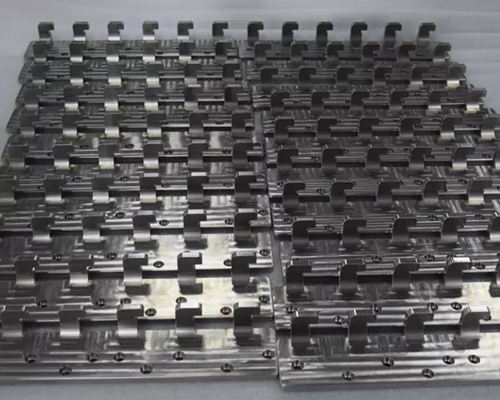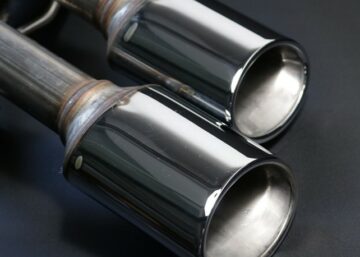One industry that relies heavily on a large number of high-precision parts is the automotive industry. Even the aesthetic components of modern cars are very high-quality. That being said, car production moves forward with the manufacturing techniques. It was the new production line concept of Henry Ford that actually allowed vehicles to spread all over the world. So, here are some innovative techniques that influenced automotive precision manufacturing in 2020.

Need a one-off test part, low-volume production prototype order, or 100,000 custom pieces, WayKen is your source for custom parts!
Innovation Trends of 2020 that Drive the Automotive Industry of High-precision Parts
Modern automotive design is driven by the development and rapid spread of the IT and the internet into every aspect of human life. A modern car is not simply a means to move from one place to another, it offers a whole complex of comforts and luxury. It is also becoming a robot. One of the newest trends is the connectivity between different cars. Cars start to notice each other and large players install various automatic collision avoidance systems. New developments in composite additive manufacturing allow the creation of new lightweight freeform designs and the development of robotic system makes for new cruise control and self-driving systems.
All those trends require creating more and more high-precision parts rapidly. And here are some new technologies that make such automotive precision manufacturing possible.
Cloud-based Planning and IoT for High-precision Automotive Parts Manufacturing

Smart and Cloud-based manufacturing is one of the cornerstones of the Industry 4.0 concept. Automotive high-precision parts production is considered mass manufacturing and it has strict timelines to fit the production plan. Failing that will generate massive additional costs for the plants as each high-precision part costs creates much more value. That is why cloud-based planning systems were developed. They consist of a server that can unify company branches all over the globe and all information and files are kept there, they are modified in the cloud and every participant can see any change in real time. That allows for faster responses and the production managers can see all the aspects of manufacturing systems. It also allows outsourcing factories to places with cheaper costs and still keeping an eye on them. Cloud-based planning has become indispensable for the automotive manufacturers who use it.
Making Lightweight Ultra-Precise Automotive Parts With Topology Optimization And 3D-printing
Topology optimization is a considerably new design technique that has become popular when additive manufacturing became usable for creating functional automotive components. The two processes combined represent the cutting edge of engineering design and automotive precision manufacturing technology.
Topology optimization allows the designer to review existing components and decrease their weight based on structural strength simulations up to 70% while retaining their overall functionality. The method is simulation-driven, the designer states a volume where the part elements may exist, he states the loads the part undertakes and creates some joint surfaces that must always be present in the part for it to work. After that, a complex iterative finite element analysis simulation starts. Its sole aim is to generate design ideas in the form of graphs. These graphs show where the part should exist in the design volume and where it shouldn’t. Basically, the program splits the design volume into tiny portions where 1-the fraction is filled with material, 2- it is void. A combination of the fractions presents a generative design of the part. This method offers ideas that are outside of our comprehension and design thought. There is nothing excess in the part anymore. But it’s very hard to manufacture such complex geometries. That is where Additive manufacturing comes in.
Additive manufacturing is the process that allows the manufacturing of such organic lightweight designs with a minimal need to machine the components further. High-precision automotive part production has become available via Additive manufacturing only 5 years ago or less. But the changes it has made into the structure of cars cannot be reversed. Topology optimized organic components that are strong but lightweight have been installed in various cars already, some assemblies have a considerably smaller number of parts in them because additive manufacturing can create united parts that couldn’t be created by machining or casting due to physical reasons.
Keeping High-Precision Automotive Manufacturing Sustainable
Sustainability is still the trend of the year. Pollution and carbon dioxide generation have been rising because production has been skyrocketing this decade. And that is why it is important to hold back all the harmful elements that come from automotive high precision manufacturing solutions. A great portion of automotive production relies on machining metal components. Those include a lot of hardened parts that work under sufficient dynamic loads, for example, gears, shafts, pistons etc. A usual workflow to create custom gears includes preliminary machining, a thermal processing operation, fine machining and finishing. Scientists and engineers recently developed a metal that uses some of the advantages of selective laser heat processing from the AM technology. They made it possible to machine the gears and heat treat them on the spot with a laser beam. This significantly decreases the time and resources required to create these parts and makes automotive manufacturing leaner and smarter.
Friction Welding: an Innovative Method for High-precision Car Parts
Friction welding itself is not an innovative technique, but it has recently been renovated. The development of fuel-efficient vehicles has given a rise to the  complex high-precision sheet processing industry. It has become important to weld together different alloys: aluminum, magnesium, titanium with each other and composite materials, while keeping the heat-affected zone as small as possible. A high precision technology solution for that task has been realized in the form of abrasive friction welding methods. There are many variations that include creating rivets, spot welds, and actual long watertight welding seams but the general idea is the following:
complex high-precision sheet processing industry. It has become important to weld together different alloys: aluminum, magnesium, titanium with each other and composite materials, while keeping the heat-affected zone as small as possible. A high precision technology solution for that task has been realized in the form of abrasive friction welding methods. There are many variations that include creating rivets, spot welds, and actual long watertight welding seams but the general idea is the following:
A hardened small pin revolves around its axis. It is usually made of some sort of ceramic material or another heat resistant alloy. It is pushed into the joint or on top of two sheet components and a lot of friction is formed between them, so much, actually, that the sheets start to melt under all that temperature generated by the friction. Then the pin moves along its toolpath and the generated melted pool cools down. The advantage of this method is that it is strictly mechanical and doesn’t generate any excess heat.
As you can see in the pictures below, you can efficiently join carbon fibers with aluminum, steel and aluminum alloys with ease, no complex gas protection while welding, and minimal distortion.
Using Aerospace High-precision ECM Technologies for Automotive Manufacturing
Another modern trend of manufacturing is mixing techniques from various branches are being integrated together. One such example is using high-precision Electrochemical machining of titanium components widely used to create turbine blades and blisks for lightweight high-precision, high-finish automotive parts. The EDM process of titanium alloys focuses on the electrolysis of tiny particles of material when the exchange of them occurs in an electrolyte environment. The particles on the workpiece Cathode move to the surface of the ECM anode but they don’t get to their destination as they are removed by a high-rate electrolyte flow in the processing zone. Eventually, the workpiece surface becomes a copy of the tool. This generates a very precise surface of any form with a good surface finish. The main advantage is that you can use it on virtually any material with the same degree of success no matter how hard it is. This makes it perfect for titanium: an alloy popular for its poor machinability, great strength, corrosion resistance, and light-weight. So, with these aerospace techniques, manufacturers have been able to create some complex and lightweight titanium components, for example, car lights.
We can custom CNC machined parts from your design.
Conclusion
Car manufacturing perpetually moves towards higher efficiency, sustainability and manufacturing volumes. Each time we see new models with outstanding parameters, aesthetic looks, and reduced prices, it means that the high precision manufacturing technology has made yet another step forward. According to the automotive news, 2021 is going to be a year with many new trends. One of them is improving casting techniques. Variations of vacuum casting and consecutive additive manufacturing are already being developed, conjunction techniques that involve both casting and pressing are emerging and we can be sure to see further development of the additive industry with its selective laser melting, sintering and welding options.
Consequently, the design and safety simulations are not falling behind and we are sure to see some new ways to estimate car strength, precise collision estimations, and create new mind-boggling designs. Apart from that, conducting tests is still extremely important and we see the developing rapid automotive prototyping branch of the industry making large strides to provide car designers with high-quality prototypes through 3D-printing, rapid injection molding, 5-axis CNC machining, and a bunch of other prototyping techniques. Despite the hardships of these years, car developers do not seem to stop or move slower in their progress.




